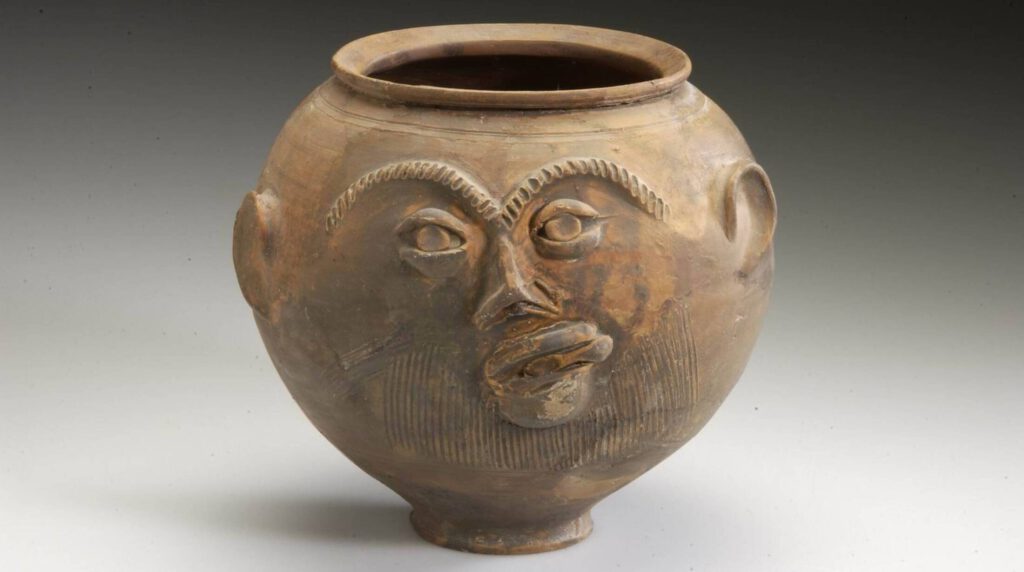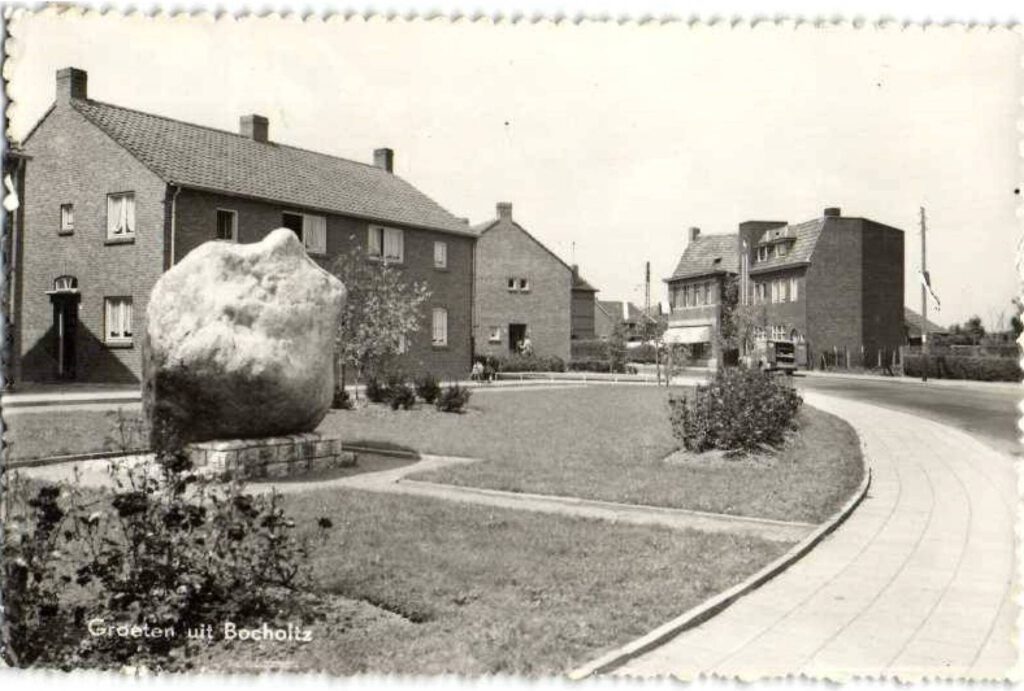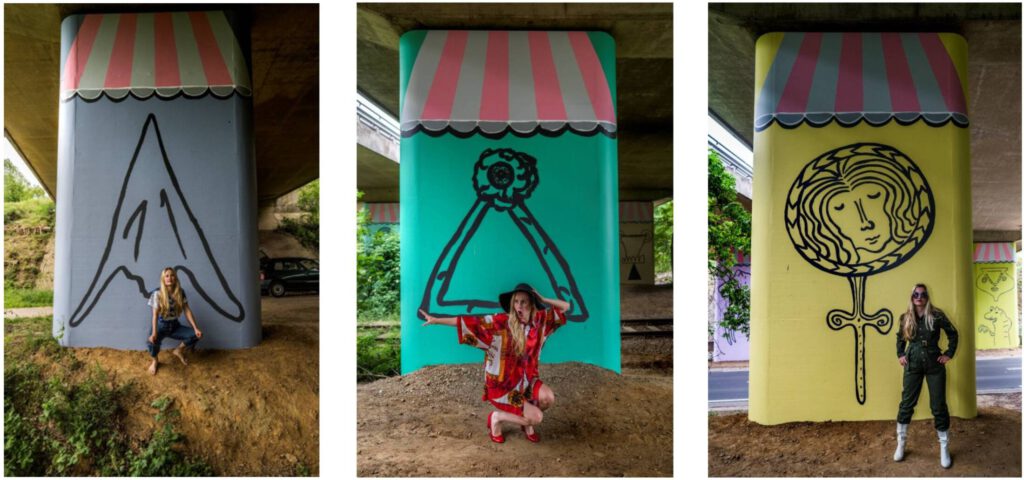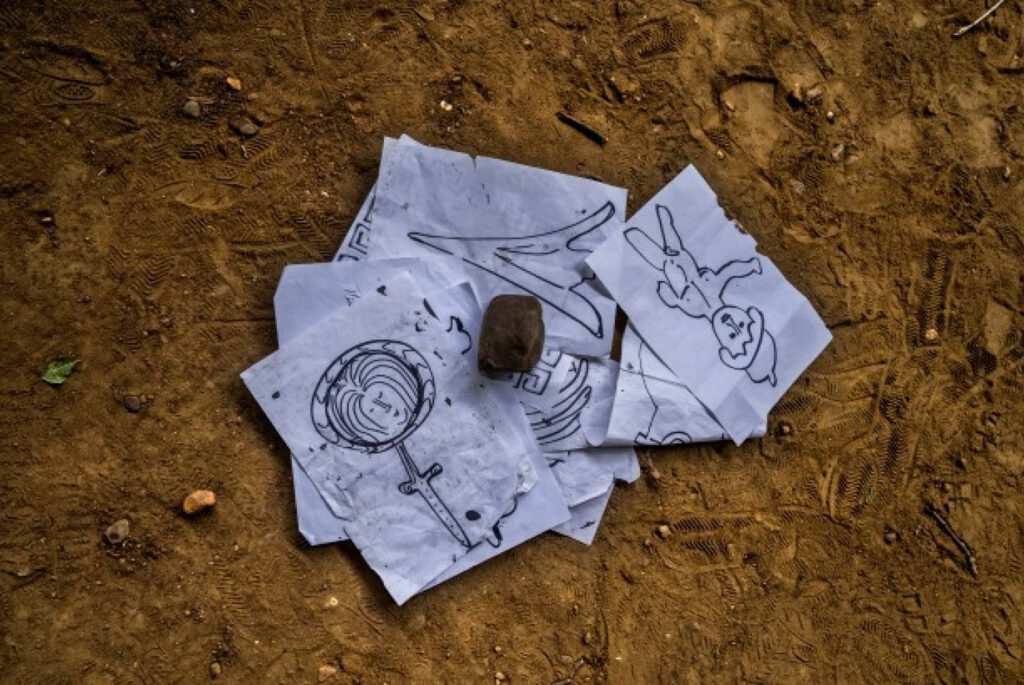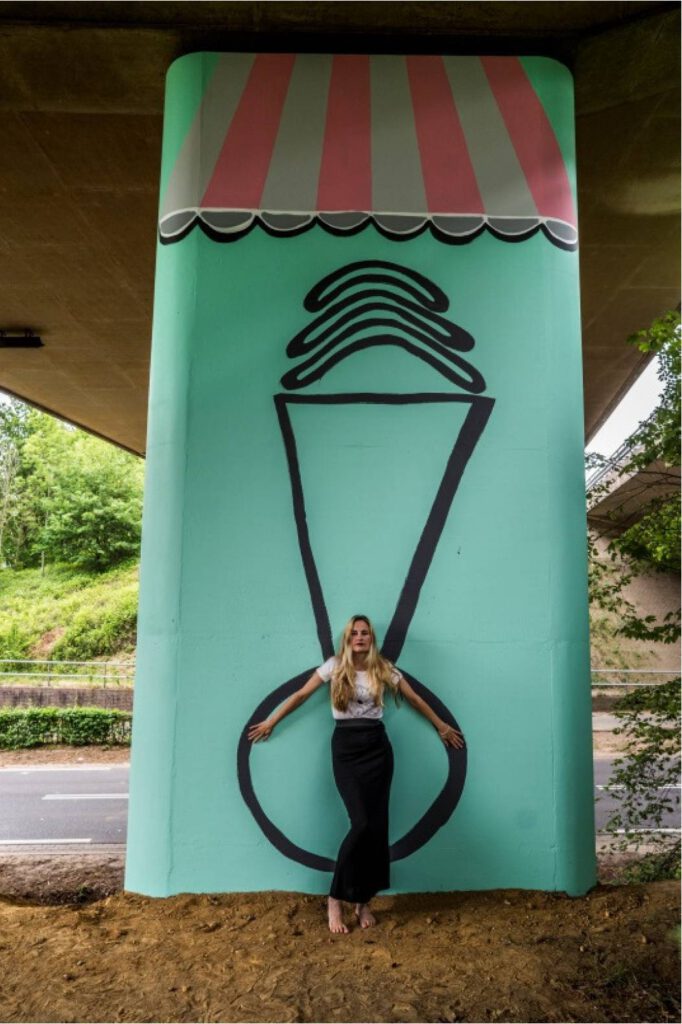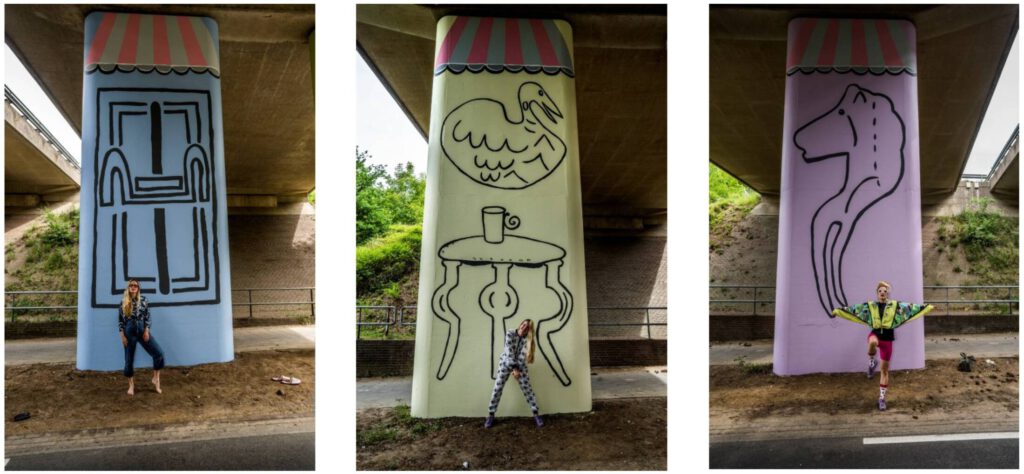Artwork – The Ritterbecher
N281, Bocholtz
At the crossroads of the N281 and the Bocholtzerweg there is a work of art that gets people talking. Above the motorway towers a Roman vase that looks like papier-mâché. Under the viaduct, drawings in bright colours cheer up the concrete pillars. They are the work of Tanja Ritterbex, who for this artwork takes inspiration from Roman history and from her own surroundings. Like the big boulder in Bocholtz, where she often sat on top as a child. When IBA Parkstad asks her to design a Roman vase, in her mind she returns to the unpolished form of that boulder.
Art is life
The artist often draws from her own life in her work. “When I receive a clearly defined commission, I first let go of it again. I always start from my own artistic practice, from my own working method. That is how an autonomous artwork comes into being,” she explains. That pays off. In 2016 she won the prestigious Prize for Free Painting. Tanja has now been living and working in Berlin for years.
“Artists who inspire me are Jean Debuffet, Karel Appel or the lesser-known Maud Lewis. My heart beats faster for the naïve, simple in art. During a colloquium in my student days at the Düsseldorf Academy I heard a New York artist say: ‘Oh, it’s the KISS principle: Keep It Simple Stupid’. I believe in this principle.”
Clear in the blink of an eye
In other words, art does not have to be difficult. Her work on and under the viaduct proves that she lives by this conviction. Still, the Ritterbecher is certainly well thought out. Tanja visits Roman museums and studies the form and colour of Roman finds. “The Romans had vases with two handles, but also with three. I find the latter a beautiful concept. Because of those three handles, the vase has no front or back. Motorists can see this landmark from every direction, whether they come from Germany, the Netherlands or Belgium.”
Tanja makes sketch designs of vases with whole stories on them. But she soon comes to the conclusion that her design must be clear in the blink of an eye. After all, you see it from the car. The Roman vases with a face on them, so-called face urns, offer a good alternative. The Romans used them as drinking vessels or urns, Tanja gives them her own contemporary twist. “In my work I draw not only from Roman times, but also from our contemporary culture,” she explains.
Playing with materials
“This artwork would not be mine if it did not contain elements of our present time. I incorporated that ‘modern’ symbolism into the vase by putting a big smiling face on it. The cheerful Roman portrait has been translated into a smiley, a symbol that we use daily and that breathes our own time.” Thus, the vase has not only three handles, but also three faces. The round shape of the vase also refers to the smiley.
“I draw in my work not only from Roman times, but also from our contemporary culture.”
Tanja cites the Austrian sculptor Franz West as one of her examples. “He plays with these kinds of forms, first in papier-mâché and later in polyester.” The Ritterbecher shows the same kind of material confusion: the relation with heavy stone, the illusion of fragile papier-mâché, and the actual material: hard but light aluminium.
Does she mind that the Romans did not use aluminium? Tanja can be brief: “That is not important to me. I chose a method and a material of today. In my artistic practice I find it important to use my own everyday inspiration.” Contemporary art is not a copy of reality, she thinks: for a replica you don’t need an artist.
Roman colours and forms
For her work on the bridge pillars, Tanja dives specifically into the Roman past of Simpelveld and Bocholtz. Which finds were made, which drawings appeared on them, which colours were used? In the Thermenmuseum in Heerlen she studies the smallest objects in the display cases. She also draws inspiration from the sarcophagus of Simpelveld. She does not translate it literally, but abstracts it from reality by combining old and new: the Romans, her own method and everyday bustle and symbolism.
Based on the Romans’ use of colour, Tanja puts together a palette for the 12 pillars of the viaduct. Bright red is excluded: that is the colour of danger. She mixes the primary colours yellow and blue into the blue and turquoise tones of Roman glassware from the region. Tanja: “I have seen examples of lilac, light blue and purple-blue glass. Incredibly beautiful colours. Terracotta and earthy tones also occur in many variations.”
The total artwork is a monumental commission. To preserve monumental unity, she paints the same canopy on each pillar, a reference to Roman markets. “Romans loved trading. They sold everything at the market, even flamingos to eat! I like the idea that today we still trade at the market.”
The drawings on the pillars are abstract, sketch-like line drawings. They are derived from the relief inside the sarcophagus of Simpelveld and other Roman finds. You see a broken hairpin, a Roman buckle, a coin, a face urn, a hand mirror, doors, a little table and a vase. Tanja also combines these abstracted forms with symbols of our time, such as Roman children’s toys with a rubber duck. Or a keyhole with a Wi-Fi logo: the Roman and the modern way to spy on others!
De tekeningen op de pilaren zijn geabstraheerde, schetsmatige lijntekeningen. Ze zijn afgeleid van het reliëf aan de binnenkant van de sarcofaag van Simpelveld en andere Romeinse vondsten. Je ziet een kapot haarspeldje, een Romeinse gesp, een munt, een gezichtsurn, een handspiegel, deuren, een tafeltje en een vaas. Die geabstraheerde vormen combineert Tanja ook hier met symbolen uit onze tijd, zoals Romeins kinderspeelgoed met een badeendje. Of een sleutelgat met een wifilogo: de Romeinse én de hedendaagse manier om anderen te bespioneren!
